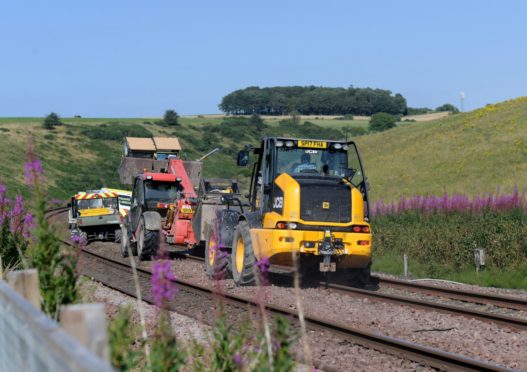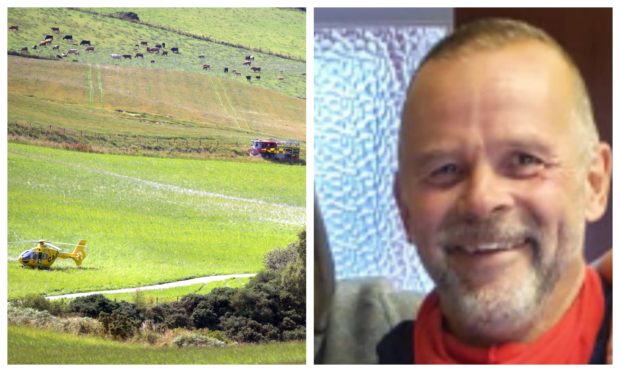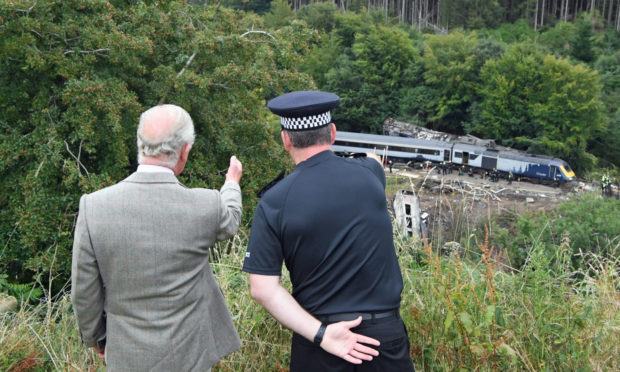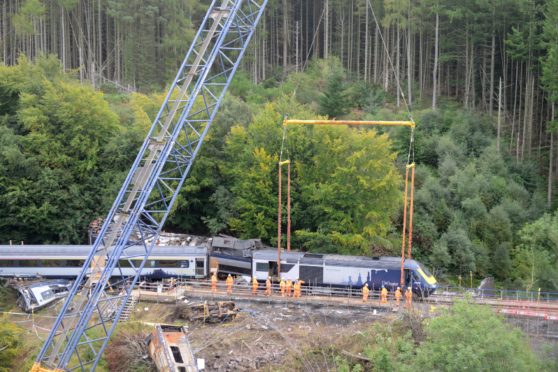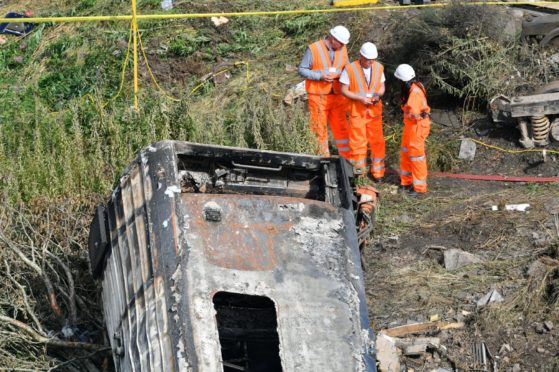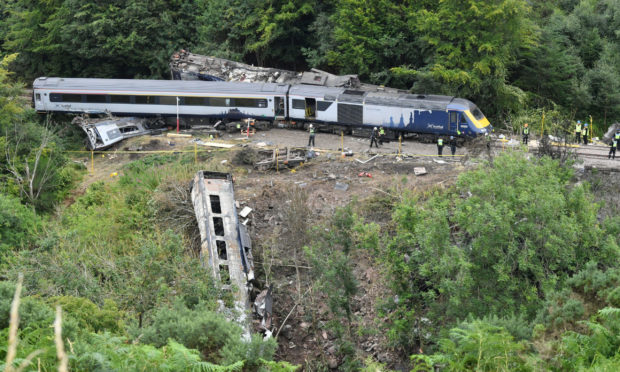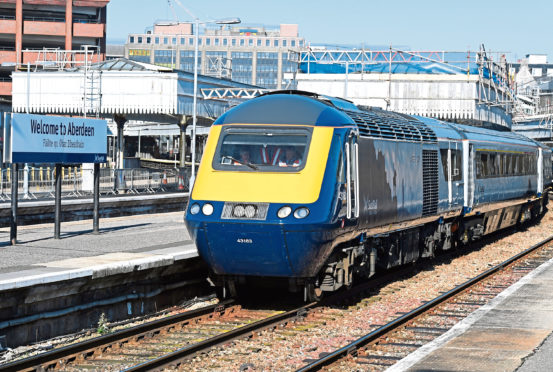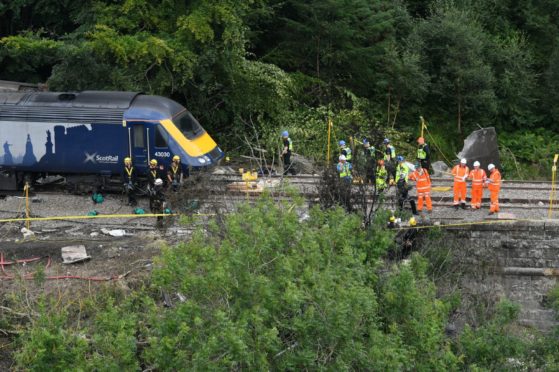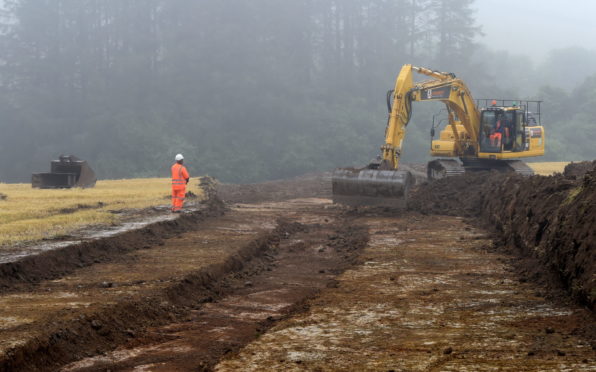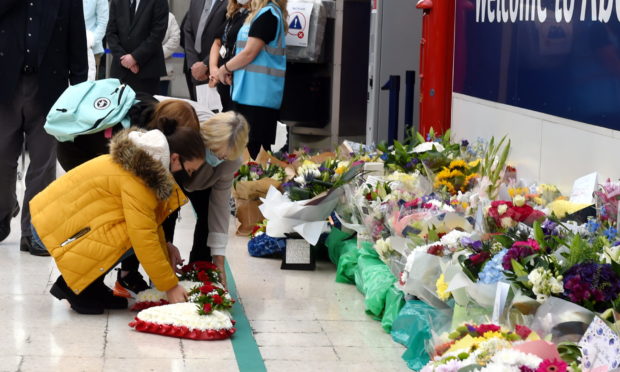Network Rail has announced it will carry out “supplementary specialist inspections” of “higher risk” trackside slopes with similar characteristics to the site of the Aberdeenshire train crash.
The rigorous testing has been introduced in response to yesterday’s train tragedy where three people died following the derailment of a ScotRail Inter7City HST at Carmont.
Network Rail said there would be a “few dozen” sites where inspections would be needed.
The works will be executed by the rail firms engineers and specialist contractors. A helicopter survey will also be used.
Analysis on flash flooding, caused by “unpredictable extreme weather”, is also being carried out as part of the inspections.
The stretch of railway line where the derailment occurred has had problems with mudslides in the past.
In October 2018, a non-passenger service train derailed in the area. The crew were unhurt.
And in October 2002, the Aberdeen to Dundee line was closed due to a landslide at Carmont during torrential rain and gales.
A Network Rail report from 2014 included Carmont in a “list of sites which in recent years have been greatly affected by earthslips”.
The document said improvement work had been carried out at Carmont, specifically, “remediation of cutting slope following emergency, after mudslide due to flooding”.
